 |
: november 2003 |
||||||||
| Discovery context:: A collector bought this whistle in a flea market. The pipe was blocked with earth and the seller didn't know for what use this little "jug" was made. General description:
The shape of this whistle is very special. The whistle is made of an opened ball. On the border of the hole (the window) is fixed a pipe of 1 centimeter in diameter with a wind canal of 3 mm in diameter . On each side is a playing hole but the left one is blocked. |
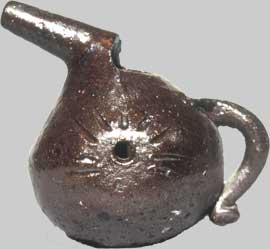
L max: 9,6 cm H max: 8.7 cm D max: 6,7 cm Private Col. |
||||||||
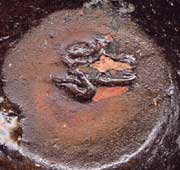 Mark under the base |
The decoration: The whistle is not very decorated. Just some lines around the playing hole represent rays of sunshine. Under the base is a mark hard to read in a first approach. |
||||||||
| Study of the object: Typology: Of course, this whistle is a globular one. It is very similar to the boatswains pipes. The sound has a hushed tone and is modulated with the playing hole. |
|||||||||
| Analysis: No mystery for the origin of this whistle. It is a typical shape in Puisaye, a region in the center of France. In Marcel POULET's book "Poteries et potiers de Puisaye et du Val de Loire XVIème-XXème S. (2000)", the author describes such whistles in the bird calls category: "Whistle in the shape of a bowl topped by a little pipe. Could imitate the bird songs. Sometimes a playing hole can give two different tones. Called "cocottes" (cluck-cluck) by the potters". |
|||||||||
| The author of this book helped to identify the author of this whistle. He said that it was a "cuckoo" made near 1960 by François SOLANO, potter in la Bâtisse (village of Moutiers). The mark represents the initials FS.
François Solano, born in 1921 in Spain, took refuge to France in 1939 and enlisted in the French Army. Prisoner in 1940, escapee, he took refuge in Puisaye where he went to the Resistance. 10 Cagnat's generations have been quoted as potters since the early 17th century. This whistle is part of the traditional potteries.
|
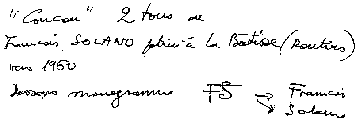 |
||||||||
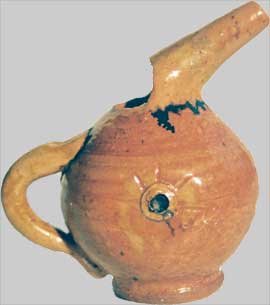
Private col. |
A similar whistle was found afterwards in a private collection. It has a more readable mark and a signature "solano". | 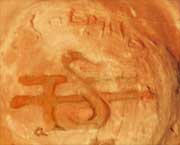 |
|||||||
| If the geographical origin of the whistle is known, the history of this shape is still mysterious.
The shape has been well known for metal whistles since the Middle Age but no similar clay whistle can be found in other French or European regions. Only some whistles dug in the Low Countries and dated for some searchers from the 9 or 10th centuries have a similar shape of a bowl toped with a pipe. No posterior similar whistle in the Low Countries can allow to imagine a continuity for this technic.
|
|||||||||
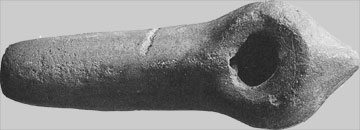 Fries Museum Leewarden Col. Photo Catalogue "Opgedolven Klanken" Drents museum |
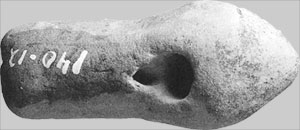 Col. Fries Museum Leewarden Photo Catalogue "Opgedolven Klanken" Drents museum |
||||||||
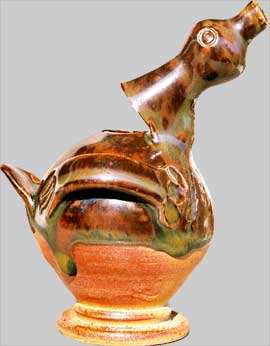 Laitier glaze Private col. |
If the history of this shape is unknown, it still inspires the modern potters in Puisaye as one can see with a bird whistle where the bowl is the bird body an the pipe its neck and head. The two lateral handles are the wings. This whistle was made by Jean-Claude Seguin (born in 1954) potter in Saint Vérain whose production finds inspiration in the traditional ceramics of Puisaye. |
||||||||